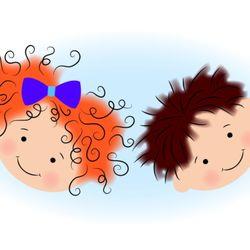Health Resources
Page Navigation
- Overview
- Welcome Back Letter from School Nurses
- When should I keep my child home from school?
- K-12 Immunization Requirements
- Preschool Requirements Immunization
- Universal Physical Exam Form
- Medication Authorization Form Information
- Asthma Action Plan
- Food Allergy Emergency Care Plan
- Head Injury Information
- Head Lice
- CDC Measles Information for Parents
- Preventing the Spread of Measles
- Flu Information- Everyday Preventive Actions
- North Haledon School District
- Head Lice
Head Lice
-
Head louse eggs (nits) are grayish-white tiny cases, attached to hair strands usually close to the scalp.The eggs hatch and begin crawling after about nine days and feed on the scalp.One significant sign is usually scratching of the scalp.That would be a sign to definitely check your child’s head. Please go to a room with very good sunlight.If you see white flakes in your child’s scalp and you can’t flick it away with your fingers, search the entire scalp.Lice do not move with the flick of your fingers.This is a good way of determining lice from dandruff or dry scalp.
As a parent or guardian, you are in a unique position to prevent an outbreak by routinely checking the hair of your child.As the school nurse, I will perform a head and scalp examination as needed on children suspected of having head lice or nits.If head lice or nits are found in your child’s head you will be called to pick up your child and he/she will not be re-admitted unless properly treated and are lice and nit free.You must stop by the health office upon re-entering with the label of the hair treatment you used and I will also recheck your child’s head.If your child is free of lice and eggs he/she may return to class.If not, you will have to bring your child back home and remove any nits that you see and call your physician.This action will be necessary to protect all of our students.
Consult your physician if you need assistance in selecting the proper treatment. Machine wash all washable clothing and bed linens with hot water and detergent.Drying at high heat for at least 20 minutes will destroy the nits.Lice cannot live without a human host but they do travel quickly to find one.They can live up to 24 hours off the host in carpets, pillows, etc., and re-infest heads.
You may also visit the CDC website for additional tips to reduce your risk of contracting lice.


